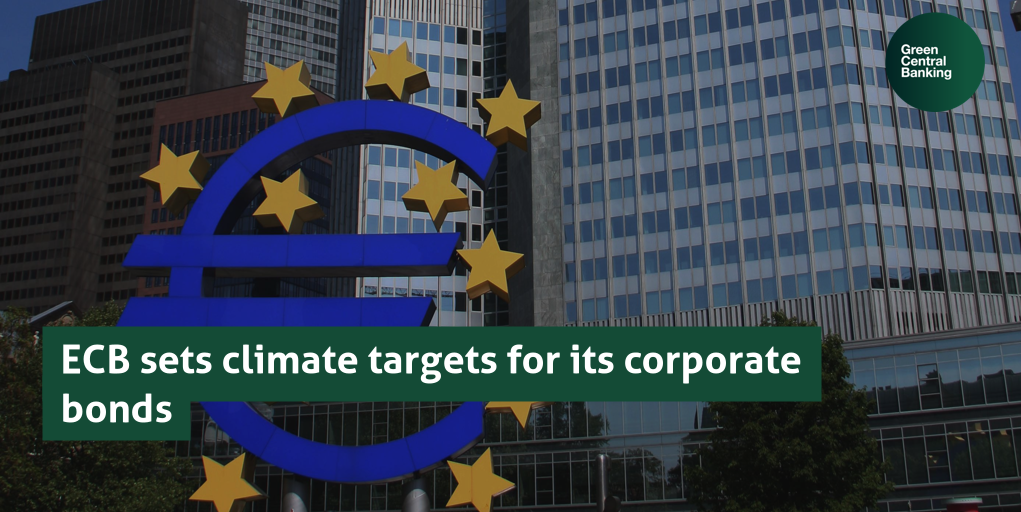The European Central Bank (ECB) has announced it will set emission reduction targets for its corporate bond portfolios and could rebalance assets away from those that don’t align with its climate targets, as it strives to make its monetary policy greener.
In its second set of climate-related disclosures, released Tuesday, the ECB said its governing council would set interim emission-reduction targets for its asset and pandemic emergency purchase programmes, which will be based on the European Union’s climate benchmark legislation.
“At this stage, these targets will be used internally to monitor the corporate portfolios’ emission reduction trajectory. If deviations from the desired trajectory are identified, remedial actions will be assessed, within our mandate, on a case-by-case basis,” the report states.
The ECB holds €350bn worth of corporate debt as part of a stimulus package, although purchases have stopped and even reinvestments will cease at the end of 2024.
The central bank noted that greening its portfolios was dependent on factors outside its control, such as issuers’ own decarbonisation efforts, market conditions, and bond issuance patterns.
ECB president Christine Lagarde said in a statement that the central bank relied on others to deliver on their decarbonisation commitments in order to lower its own emissions.
“Ultimately, action needs to be taken at issuer level for the economy to decarbonise. This is what matters most to put the world on track towards net zero carbon emissions,” she said.
A nod to scope 3 emissions
Building on a first set of disclosures released in 2023, the ECB expanded the scope of assets reviewed from €395bn to €4.5tn, covering 99.7% of total assets held for monetary policy purposes. However, some assets, such as asset-backed securities, gold, special drawing rights and cash were not included due to a lack of standardised methodologies and data availability.

The ECB found that between 2018 and 2023, the carbon footprint of its covered bond holdings fell by 50%, while its carbon intensity declined 61%, driven by decarbonisation at the issuer level, offsetting its increasing portfolio size. There was a drop in total carbon emissions to 39%.
Meanwhile, the total carbon emissions of the Eurosystem’s corporate sector portfolios fell slightly to 47 million tonnes of CO2 equivalent (tCO2e) in 2023 from 50 million in 2022.
For the first time, the ECB included an annex on metrics based on scope 3 emissions – those that can be attributed to activities up and down the value chain.
These were not included in the main assessment due to data quality issues that limit the reliability of these calculations, including estimation uncertainty, diverging estimates and methodological changes over time. However, the central bank opted to include the annex despite these shortcomings, in order to “incentivise issuers and data providers to enhance scope 3 emissions reporting”.
In a separate report, the ECB noted that both equity and corporate investments in its staff pension fund were aligned with the Paris Agreement, and emissions were lowered by around 50%.

The share of green bonds also increased to 20% in 2023, with 90% allocated to issuers in the EU. The central bank said it plans to increase its share of green bonds in its funds portfolio to 25% this year.
This page was last updated June 28, 2024

